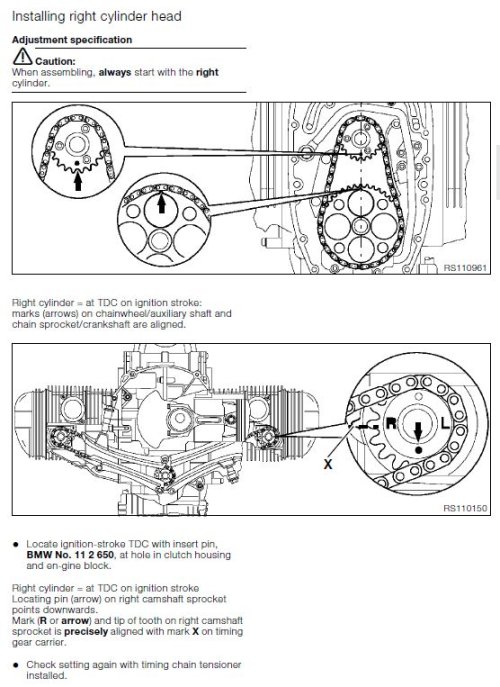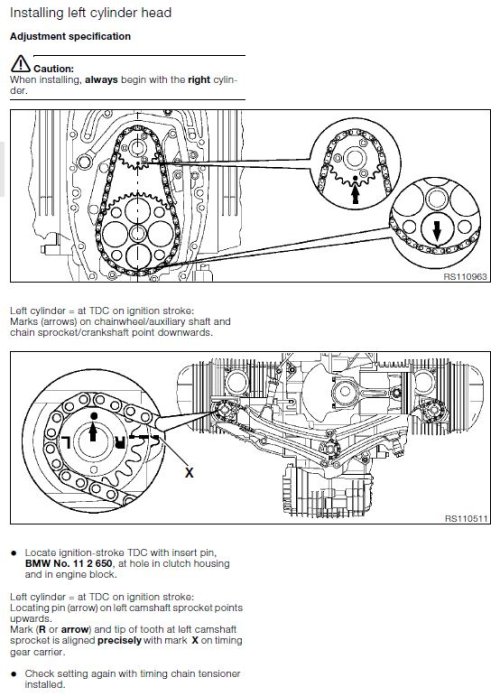pauls1150
MOA #24991, south of Los Angeles
re the arrows - When the engine is assembled correctly, those arrows are used for setting the valves, instead of trying to find a mark on the flywheel. Turn the engine over manually (either by the front nut or the rear wheel, using 5th gear) in the normal direction of rotation (to take up any cam chain slack) until the arrow points straight out horizontally, at either the 9:00 o'clock position (left side as viewed from the rear) or the 3:00 o'clock position (right side as viewed from the rear). That will put you on the "flat" of the cam - but you still need to determine if that cylinder is actually at TDC, or at overlap (as explained by d'Yoda). The actual TDC side should have a little "wiggle" if you grab & jiggle both of the rockers, and this side is ready to adjust, while the overlap side will not have wiggle, it should feel tight ... assuming that they are "in the ballpark" to begin with. Set the valves one RCH loose just to be sure they can fully close, turn the engine over 360 degrees, and you should be set to do the other side.


